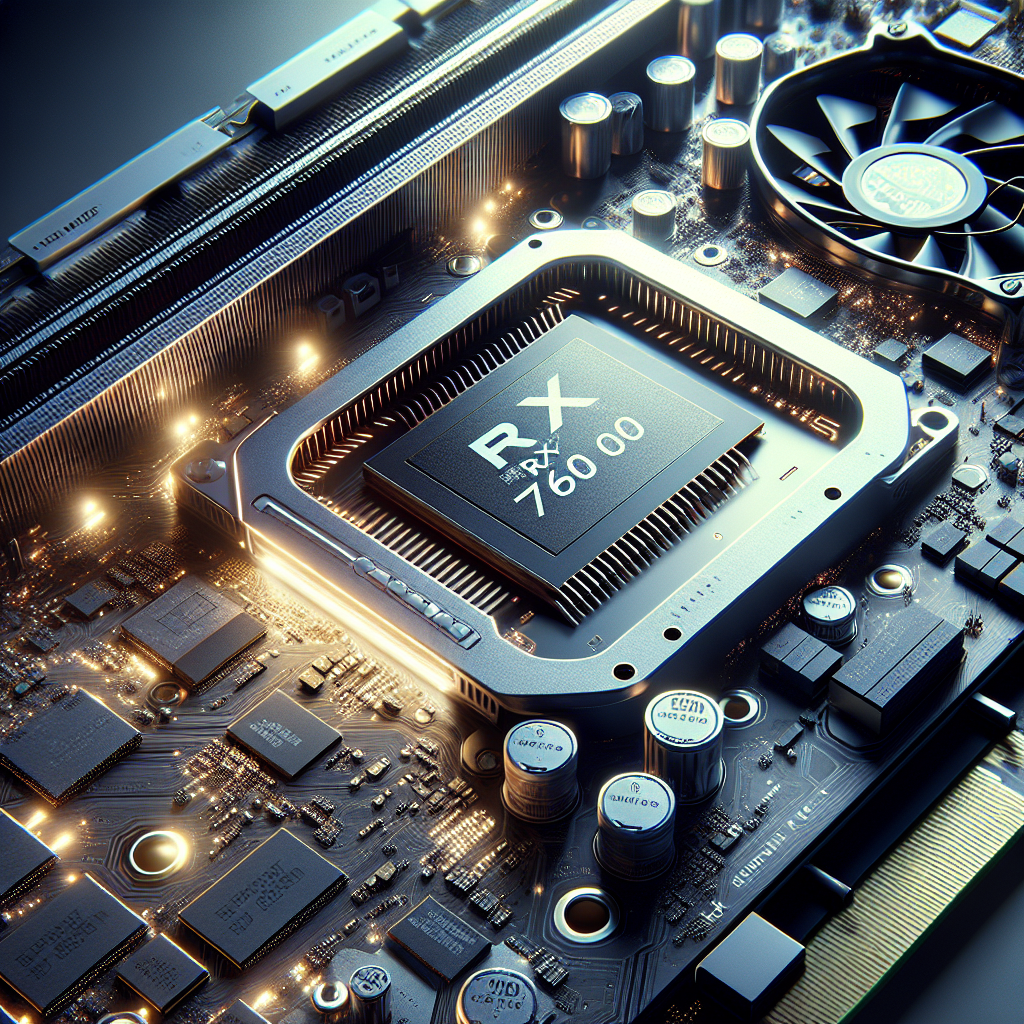AMD's RX 7600 XT: Doubling Down on VRAM in the Shadow of RDNA3's Mobile Misfire
In the tempestuous realm of graphics cards, a new contender steps into the limelight, radiating an aura of potential yet shrouded by the veil of a predecessor's faux pas. AMD, a stalwart in the industry, has unfurled the RX 7600 XT, a card that doubles the VRAM of its sibling, the RX 7600, with a modest clock speed boost. It's a move that's as strategic as it is enigmatic, particularly juxtaposed against the backdrop of RDNA3's startlingly deficient mobile adoption.
A 1080p Powerhouse Ascends
The RX 7600 XT materializes as a beacon of 1080p gaming, with ambitions loftier than its forerunner. It's not just the doubled VRAM that entices—16 gigabytes of it to be precise—but also the promise of about a 10% uptick in clock speeds, positioning this card as a potentially ideal solution for gamers who cling to 1080p but covet the whisper of future-proofing gales.
AMD's offering, set to hit store shelves with a price tag of $329—$60 above the RX 7600—is not merely a commercial product. It's a statement, a rebuttal to the notion that more VRAM is synonymous with overkill. The question, then, is whether this card is a prudent investment or a sly marketing maneuver exploiting the current trends of the market.
With VRAM usage in games simmering up a storm, the idea of a 1080p card stocked with a bountiful 16 GB could appear excessive at first blush. Yet, as games continue to marinate in the juices of increasing texture sizes and the gaming community's perpetual hunger for modding, could this not be a sagacious move?
The Mobile Conundrum
But wait, there's a plot twist. The unveiling of the RX 7600 XT dovetails with another narrative, one less triumphant for the red team. AMD's RDNA3 mobile GPUs, announced with trumpets and fanfare, have skidded on the tarmac of laptop integration. Reports from the German publication Computer Base suggest a drought of laptops sporting RDNA3 mobile GPUs—and, curiously, a disappearance from the product lines where they once buzzed with potential.
This is no trivial revelation. It begs the question: Is AMD rechanneling resources from the mobile space to bolster its desktop lineup? The RX 7600 XT whispers hints of this strategic pivot, championing a die that could have been a mobile ruler yet finds itself in the courts of desktop sovereignty.
The Impending Challenge of RDNA4
Whispers among the winds speak of RDNA4, AMD's future starship set to cruise through the laptop universe with an even more laser-focused commitment to mobile prowess. It's a tantalizing thought, considering the lackluster embrace of RDNA3 in the same sphere. But with this next-generation architecture on the horizon, it raises the specter of whether AMD's bets should be hedged more cautiously.
Should AMD be pouring their might into a mobile market that has thus far shrugged off their advances? Or is the concentration on desktop GPUs a deft play, a recognition of where their strengths lie resonant and true? The RX 7600 XT could be the harbinger of this desktop-centric strategy, hinting at a consolidation of focus where success is not just hoped for but expected.
Understanding the Market's Reception
As with any tale of ambition and risk, the reception is as multifaceted as the strategies that concocted the product. Initial reviews and consumer sentiment simmer with discontent, some branding the RX 7600 XT as AMD's 46t, albeit with a bit of unjustified zest.
The comparison, though spicy, misses the nuances of the context. The RX 7600 XT's $60 premium is not for naught; it's a gateway to a VRAM haven that some will find irresistible. While some may decry the price hike for the marginal performance boost, others will laud it as a small price to pay for a considerable increase in memory capacity.
Detractors may point to the price-performance ratio, arguing that for a mere 10% performance uplift, the cost should have been more conservative. Yet, in the same breath, they acknowledge that the 16 GB of VRAM is an undeniable allure that renders the RX 7600 XT a more versatile and future-proof machine.
The Final Verdict: AMD's Strategic Gambit
The RX 7600 XT stands not just as another graphics card but as a testament to AMD's strategic repositioning in the face of change. As the mobile market turns its gaze elsewhere, AMD refocuses its spotlight on the desktop domain, offering gamers a product that balances present demands with a nod toward the future.
As time marches on and the market's initial fervor simmers to a reflective contemplation, AMD's RX 7600 XT may very well emerge not as the 46t it's been decried as but as a shrewd choice for gamers fixated on 1440p gaming without breaking the bank.
The tale of AMD's RX 7600 XT is a saga of strategic gambits and shifting winds. Only time will tell if this card, born from the ashes of RDNA3's mobile dilemmas, will rise as a phoenix or succumb to the shadows of the market's relentless scrutiny.
Related News
- AMD's RX 7600 XT: A Potential Market Disruptor
- AMD's Sapphire Pulse 7600 XT Review: A Mighty Contender in the GPU Arena
- The Evolving Landscape of GPU Technology: A Zesty Take on Recent Developments
- AMD's Hail Mary in AI and Mobile Computing: A Revolution or a Calculated Gambit?
- Nvidia's RTX 4070 Super Launch: A Lesson in Gamers' Expectations and Vram Economics
